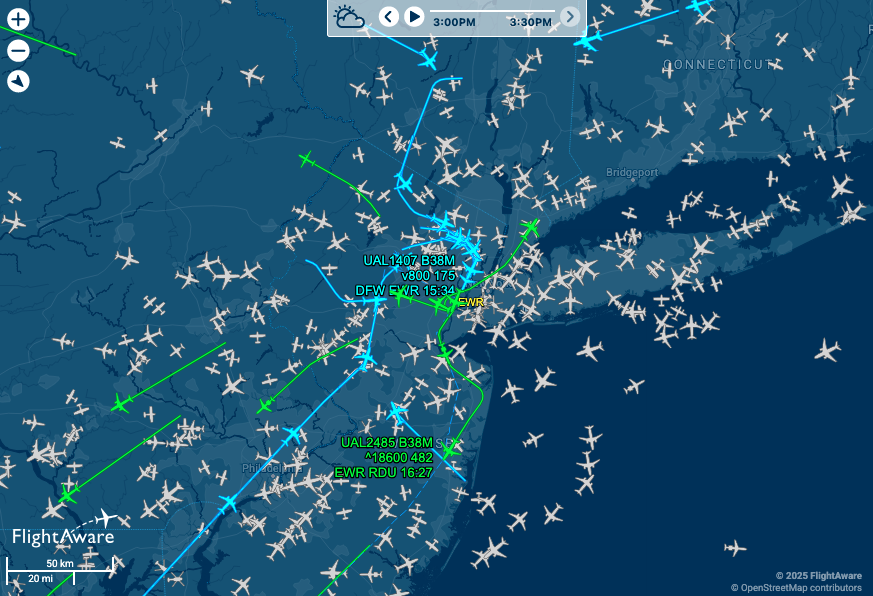Next‑Gen ACAS X vs TCAS: Challenges & Innovations in Collision Avoidance

In 2025, the aviation industry is quietly entering a new era of midair safety, as the next-generation ACAS X system begins to replace the decades-old TCAS II (Traffic Alert and Collision Avoidance System) on commercial aircraft. Gone are the rigid rule sets and frequent nuisance alerts—ACAS X leverages smarter algorithms, probabilistic threat modeling, and modern surveillance technologies to reduce false alarms and respond more appropriately to real-world conflicts.
From Reaction to Prediction: How ACAS X Works
For more than 40 years, TCAS II has served as the backbone of airborne collision avoidance, instructing pilots to climb or descend when a conflicting aircraft is detected. Its logic is deterministic—fixed thresholds, preset maneuvers, and relatively coarse safety margins. However, in today’s crowded skies, its limitations are showing: too many alerts, overcorrections, and occasional dissonance with air traffic control commands.
ACAS X, by contrast, uses probabilistic risk modeling and Monte Carlo simulations to evaluate hundreds of possible future trajectories in real time. Based on that, it selects the “least-cost” avoidance maneuver—one that minimizes disruption while maintaining safe separation. Because it can integrate ADS‑B surveillance, satellite-derived position data, and radar where available, ACAS X offers higher fidelity conflict awareness—even in areas with limited radar.
In December 2024, the FAA published a revised Advisory Circular AC 90‑120, formally recognizing ACAS X as an acceptable means for collision avoidance operational use, alongside—or increasingly in place of—TCAS/ACAS systems.
Why the Push? Benefits & Current Issues
The expected gains are significant:
- Fewer false alerts — reducing pilot workload and unnecessary go-arounds
- Better logic for resolving conflicts — more precise vertical or lateral maneuvers
- Lower residual risk of near midair collisions (NMACs)
- Smooth coordination with air traffic control — better alignment of avoidance commands and ATC vectors
But adoption isn’t without hurdles. ACAS X is not yet mandatory, and while the FAA has accepted the ACAS Xa and Xo variants under technical standard order (TSO‑C219), EASA has yet to issue equivalent European standards—creating regulatory misalignment for operators flying transatlantic or into European airspace.
Training also poses a challenge. Pilots familiar with legacy TCAS must adapt to new advisory messaging, especially in complex scenarios like parallel runway operations, where conflicting resolution logic must consider proximity and crossing constraints.
Moreover, the transition must contend with real-world anomalies. In March 2025, the FAA launched investigations after multiple flights approaching Reagan National Airport received false TCAS collision alerts, prompting some aircraft to perform go-arounds without any actual threat.
Analysts have speculated that ground clutter, signal reflections, software bugs, or even interference could cause erroneous alerts.
These incidents reaffirm the urgency of moving to smarter, more discriminating collision systems.
ACAS X Variants vs TCAS II – What’s New?
| System | Type | Use Case | Technology Base | Key Improvements Over TCAS II |
|---|---|---|---|---|
| TCAS II v7.1 | Legacy | Commercial manned aircraft | Deterministic logic, radar transponders | Widely adopted but prone to false alerts; uses rule-based “climb/descend” responses |
| ACAS Xa | Successor | Commercial airliners | Probabilistic modeling, Monte Carlo simulations, radar + ADS-B | Fewer false positives, better NMAC (near mid-air collision) prevention, smoother advisories |
| ACAS Xo | Specialized | Aircraft with operational constraints (e.g. limited maneuverability, closely spaced parallel runways) | Same as Xa, with tailored logic for edge-case environments | More nuanced resolution advisories in constrained or busy airspace |
| ACAS Xu | Unmanned Aircraft Systems (UAS/drones) | Drones and uncrewed aircraft in controlled airspace | Sensor fusion, trajectory forecasting | Enables safe integration of UAS into manned airspace; in development phase |
| ACAS Xp | Portable (planned) | General aviation and low-cost aircraft | Lightweight, ADS-B only (no transponder interrogations) | Aims to bring basic collision avoidance to aircraft without full TCAS hardware |
What’s Next: The Roadmap for ACAS X
The path forward includes continued rollout and testing across major airlines, variants to suit different aircraft classes (like ACAS Xu for unmanned systems), and future enhancements—possibly incorporating machine learning to anticipate conflicts even earlier. As industry stakeholder Richard Boll noted, “Products will be coming online over the next few years,” and operators are encouraged to adopt ACAS X in pilot training and operations.
In the end, ACAS X is more than an upgrade—it’s a paradigm shift in airborne safety. While global skies haven’t fully converted yet, the architecture, standards, and regulatory acceptance are being laid now for a future in which midair conflicts are prevented more gracefully, efficiently, and reliably.
Related News: https://airguide.info/category/air-travel-business/aircraft-finance/, https://airguide.info/category/air-travel-business/travel-health-security/
Sources: AirGuide Business airguide.info, bing.com, nbaa.org, faa.gov
